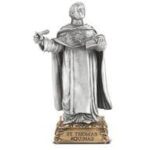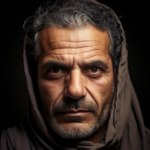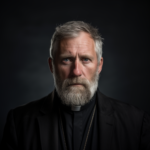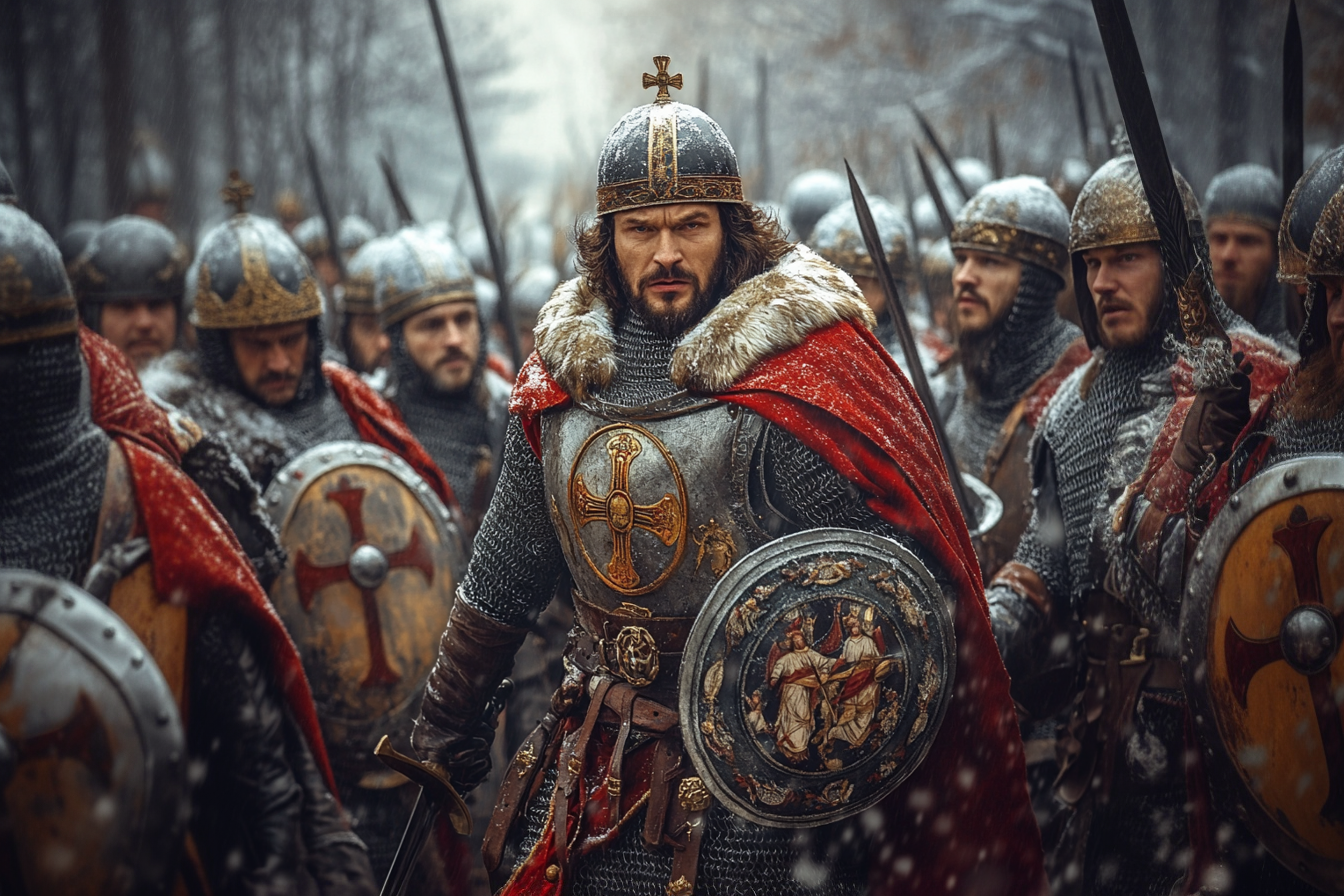
St. Stephen the Great
St. Stephen the Great
When they lived:
St. Stephen the Great lived from 1433 to 1504.
Where they lived:
St. Stephen the Great was a ruler of Moldavia, a historical region located in present-day northeastern Romania.
Notable world events during the time of their life:
- Fall of Constantinople (1453): One of the most significant events during St. Stephen’s reign
was the fall of Constantinople, the Byzantine capital, to the Ottoman Empire in 1453. This event marked the
end of the Byzantine Empire and significantly impacted the geopolitics of the region. - Italian Renaissance (14th to 17th centuries): During St. Stephen’s time, the Italian
Renaissance was flourishing. This cultural and artistic movement had a profound impact on European
intellectual life, contributing to advancements in art, science, and literature. - Columbus’ First Voyage to the New World (1492): In 1492, Christopher Columbus, an explorer
sponsored by Spain, reached the Americas. This event opened up new possibilities for trade, colonization,
and cultural exchange, reshaping the global perspective of the time. - Printing Press Invention (mid-15th century): Johannes Gutenberg’s invention of the printing
press with movable type revolutionized the spread of knowledge, ideas, and religious texts. This advancement
had a profound influence on the dissemination of information during St. Stephen’s reign. - The Reconquista (Completion in 1492): During St. Stephen’s lifetime, the Catholic Monarchs
of Spain, Isabella I of Castile, and Ferdinand II of Aragon, completed the Reconquista, recapturing the last
Muslim stronghold of Granada. This marked the end of Muslim rule in the Iberian Peninsula. - Battle of Vaslui (1475): A notable military event during St. Stephen’s reign was the Battle
of Vaslui, where the Moldavian forces, led by St. Stephen himself, achieved a decisive victory against the
Ottoman Empire. This victory cemented his reputation as a defender of Christianity and earned him the title
“Athleta Christi” (Champion of Christ).
Patronage:
St. Stephen the Great is venerated as a saint in the Eastern Orthodox Church and is considered a national hero in
Romania. He is often invoked as the patron saint of rulers, statesmen, and defenders of the Christian faith. Due
to his significant military victories and his dedication to protecting his people and faith, he is also regarded
as a patron of national sovereignty and independence.
Saint Stephen the Great of Moldavia: Faith, Valor, and Human Struggle
In the annals of Christian history, few figures stand as tall as Saint Stephen the Great of Moldavia. A ruler, a warrior, and a man of profound faith, Stephen’s life exemplifies the complex interplay between earthly power and divine calling. As Catholics, we look to such figures not as perfect beings, but as fellow pilgrims on the path of faith, whose struggles and triumphs can inspire our own journey.
A Reign Begun in Turmoil
Stephen’s ascension to the throne of Moldavia in 1457 was marked by the tragedy of his father’s assassination. At just 23 years old, he inherited a realm beset by external threats and internal strife. Yet, it was in this crucible of challenge that Stephen’s faith and leadership would be forged.
Defender of the Faith
Throughout his 47-year reign, Stephen stood as a bulwark against the expanding Ottoman Empire. His military acumen, coupled with his deep faith, allowed him to achieve remarkable victories against seemingly insurmountable odds. The Battle of Vaslui in 1475, where his forces defeated a much larger Ottoman army, stands as a testament to his strategic brilliance and the power of faith in the face of adversity.
Stephen’s dedication to defending Christendom went beyond the battlefield. He saw himself as a protector of the faith, not just of territory. This conviction drove him to seek alliances with other Christian powers and to appeal to the Pope for support against the Ottoman threat.
A Builder of Sacred Spaces
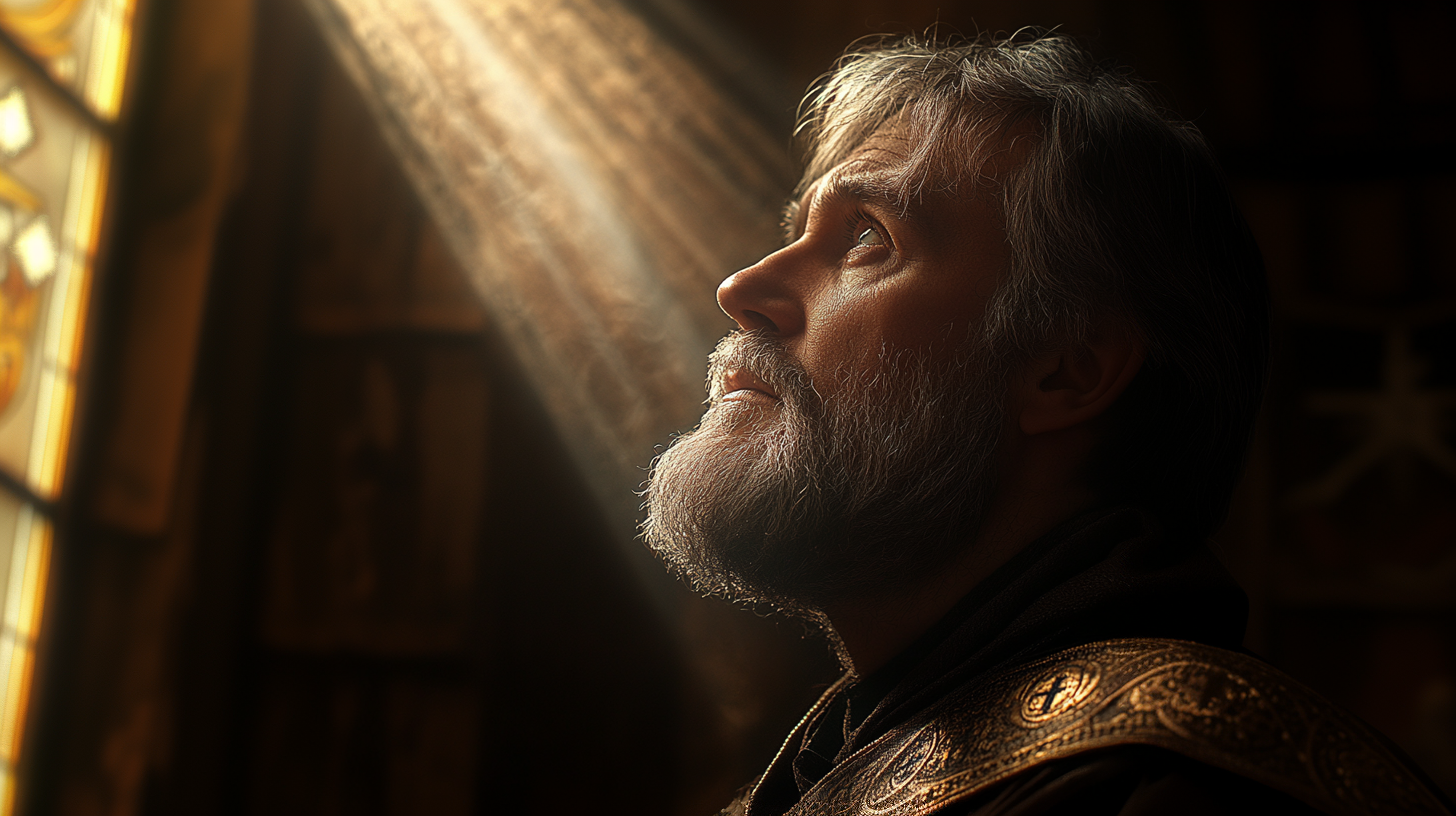
Perhaps one of Stephen’s most enduring legacies is the multitude of churches and monasteries he constructed throughout Moldavia. Tradition holds that he built a church or monastery after each of his victories, resulting in 48 such structures. These weren’t mere monuments to triumph, but expressions of gratitude to God and centers of spiritual life for his people.
The Putna Monastery, built in 1466, became particularly significant. Not only did it serve as a spiritual center, but it also became Stephen’s final resting place, a symbol of the unity between his earthly rule and his spiritual devotion.
The Human Behind the Saint
As Catholics, we understand that sainthood doesn’t equate to perfection. Stephen, like all of us, had his flaws and struggles. His personal life was complex, marked by multiple marriages and extramarital relationships. These aspects of his life remind us that even those who achieve great things for the faith are not immune to human weaknesses.
Stephen’s temperament could be fierce, sometimes leading to harsh judgments and actions. Yet, it was this same passion that fueled his unwavering defense of his people and his faith. His life teaches us that God can work through our imperfections, using even our flaws as instruments of His will.
A Legacy of Faith and Nationalism
Stephen’s reign left an indelible mark on Moldavian and Romanian history. He is remembered not just as a great military leader or political figure, but as a defender of Christianity and a patron of culture and the arts. The churches and monasteries he built continue to stand as centers of faith and national identity.
His canonization by the Romanian Orthodox Church in 1992 reflects the deep impact he had on the spiritual life of his people. While as Catholics we may differ in some theological aspects, we can appreciate the profound faith that motivated Stephen’s actions and the lasting spiritual legacy he left.
Lessons for Today’s Faithful
Saint Stephen the Great’s life offers several valuable lessons for Catholics today:
1. Faith can be a source of strength in seemingly impossible situations.
2. Our actions, especially in leadership roles, should be guided by our spiritual convictions.
3. Supporting the Church and creating spaces for worship and spiritual growth is a worthy endeavor.
4. We can serve God’s purpose even with our flaws and imperfections.
5. Defending one’s faith and culture can go hand in hand with respecting and cooperating with others.
Conclusion
Saint Stephen the Great of Moldavia stands as a complex figure in Christian history. His life was marked by great achievements in defense of the faith and numerous contributions to the spiritual and cultural life of his people. At the same time, he grappled with human weaknesses and moral challenges.
As Catholics, we can look to Stephen as an example of how faith can guide and strengthen us in our worldly duties. His life reminds us that sainthood is not about achieving perfection, but about striving to serve God and our fellow humans to the best of our abilities, despite our flaws.
In an era where faith and leadership often seem at odds, the legacy of Saint Stephen the Great challenges us to integrate our spiritual beliefs with our public responsibilities. May his example inspire us to stand firm in our faith, to serve our communities with dedication, and to always seek God’s guidance in all our endeavors.
Five Interesting Facts
- Undefeated in Major Battles: Despite facing numerous invasions, Stephen won an impressive 46 out of 48 major battles during his reign. This remarkable military record earned him fame throughout Europe as a great defender of Christendom against the Ottoman Empire.
- Church-Building Tradition: There’s a popular tradition that Stephen built a church or monastery after each of his victories. While the exact number is debated, he is credited with founding around 48 churches and monasteries throughout Moldavia, many of which still stand today.
- Longest-Reigning Moldavian Prince: Stephen ruled Moldavia for 47 years, from 1457 to 1504, making him the longest-reigning prince in the country’s history. His long reign brought stability and prosperity to Moldavia.
- Papal Recognition: In 1476, Pope Sixtus IV named Stephen “Athleta Christi” (Champion of Christ) for his defense of Christian Europe against Ottoman expansion. This title was a significant honor and recognition of his efforts to protect Christendom.
- Cultural Legacy: Beyond his military and religious achievements, Stephen was a patron of arts and culture. He established a court school for manuscripts at the Putna Monastery, which became an important center of Moldavian culture and art. Many beautifully illustrated manuscripts from this period survive to this day.
Prayer to St. Stephen the Great
Let us begin, in the name of the Father, and of the Son, and of the Holy Spirit. Amen.Amen. rious St. Stephen, first Martyr for the Faith, filled with compassion for those who invoke you, with love for those who suffer, heavily laden with the weight of my troubles. I kneel at your feet and humbly beg you to take my present need under your special protection.
(Mention your request here.)
voucher to recommend it to our Lord Jesus. Cease not to intercede until my request is granted. Above all, obtain for me the grace to one day meet God face-to-face, and with you and Mary and all the angels and saints, praise Him through all eternity. O most powerful Saint Stephen, deacon and martyr, do not let me lose my soul, but grant me the grace of winning my way to heaven, forever and ever. Saint Stephen, pray for us.
